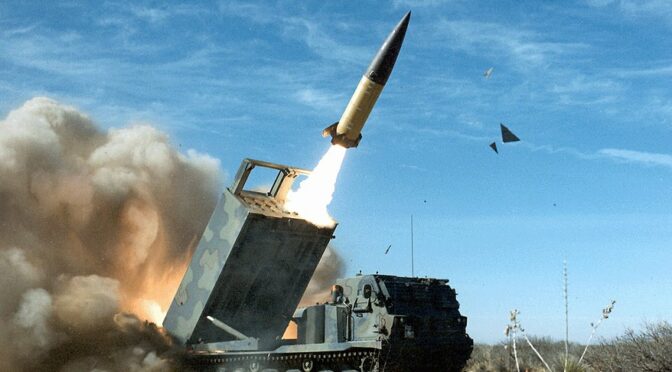Article published in The Daily Telegraph, 24 September 2023. © Richard Kemp
After more than a year of procrastination, President Joe Biden has reportedly told President Volodymyr Zelensky that ATACMS ballistic missiles will be sent to Ukraine. I experienced ATACMS fire missions against high value Iraqi targets in 1991 during Operation Desert Storm. They are powerful and precise, capable of wreaking destruction on enemy forces up to 190 miles away.
These missiles are badly needed by Ukraine, outnumbered against Russian defences with air superiority and a 10:1 advantage in artillery. But formidable as they are, they will not be a game-changer. According to reports from Washington only ‘a small number’ are to be supplied and it may be many more months before they actually come into action.
Unnecessary delays in supplying vital combat capabilities, including tanks and F16s, cost lives and handicap Kyiv’s efforts to drive the Russians out. Behind this is a fear of provoking Putin and triggering escalation. That fear is unfounded: Moscow is already throwing everything it’s got into this war and the last thing it can afford is a direct fight with Nato. Nor would Putin dare hit the nuclear button, despite his earlier bluster, now muted. Every one of his red lines crossed so far by Ukraine or the West has been met with the same bluster. True to sabre-rattling form, the day after the ATACMS decision was made public, Sergey Lavrov, the foreign minister, again trotted out the familiar line that the West is ‘directly at war’ with Russia.
Another consequence of Washington’s unfounded fear of escalation is that when ATACMS eventually arrive, they will come with a red flag banning their use against targets on Russian sovereign territory. That irrational restriction applies to all Western-supplied weapons, so while Russia is free to strike any target it can get to in Ukraine, Kyiv has one hand tied behind its back. Untying that hand could prove pivotal in this war, enabling Ukraine to strike Russian military headquarters, air bases, munitions factories, and supply lines.
Even more significant than the damage they could do to the Kremlin’s war effort, such attacks could help destabilise Putin’s regime by bringing the front line to the Russians, including elites, who have so far not been directly affected by the violence.
The regime is already looking fragile. The Prigozhin march on Moscow showed Russia that its would-be Tsar is no longer above all challenge. Rebellious generals have been sacked. Putin has gone cap in hand for armaments to North Korea, one of the world’s most isolated pariah states. The latest flare-up in Nagorno-Karabakh, caused partly by Russia’s inability to maintain its peacekeeping commitments, is another illustration of Moscow’s diminishing grip. An intensified campaign into the Russian heartland may well be a tipping point. While some might argue it could have the opposite effect, stiffening resolve among the Russian people, its impact on the current all-out trajectory of the conflict would be marginal at best.
Zelensky and his generals are well aware of the potential strategic impact of taking the war into Russia and, despite a furious fight in the east and south, have put significant effort into a campaign of drone and sabotage attacks that are now becoming almost daily occurrences. Using only locally-produced munitions, many inflict limited physical damage, although they often cause disruption such as the closure of Moscow’s airports, and divert other resources that are needed at the front. Some strikes have been more significant: an attack by up to 20 drones destroyed four military aircraft in Russia’s Pskov region last month and an explosives attack on Chkalovsky military air base near Moscow severely damaged two planes and a helicopter.
These operations show us what could be done with more powerful assets. During a recent visit to Kyiv, General Kyrylo Budanov, chief of military intelligence, told me that one of his priority needs from the West is long range attack drones or, as a bare minimum, supply of stealth coating to increase the chances of Ukrainian drones getting through to their targets. He believes this ‘has the potential to transform the enemy’s operational and strategic rear into an absolute sieve’.
Wars are not won by fear of the enemy but by boldness and risk-taking. If the West is serious about wanting Ukraine to prevail in this conflict it should send in weapons capable of penetrating Russian territory and give Kyiv a free hand to use them.
Image: Wikimedia Commons

